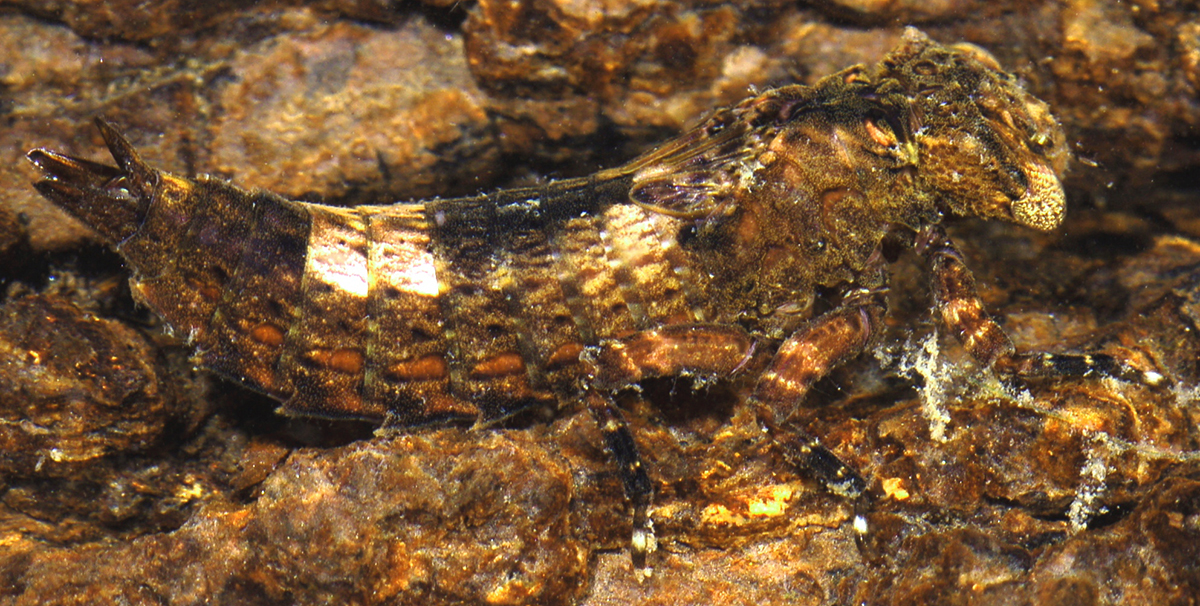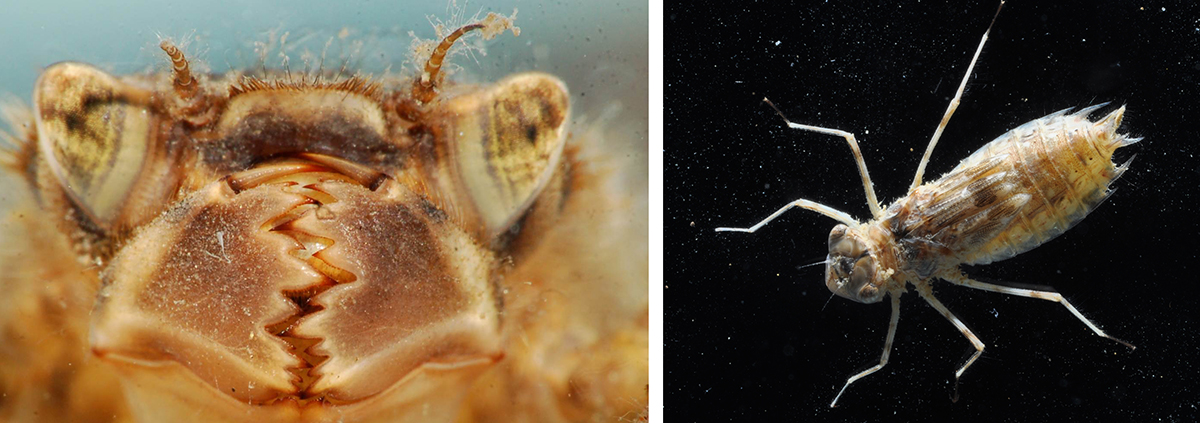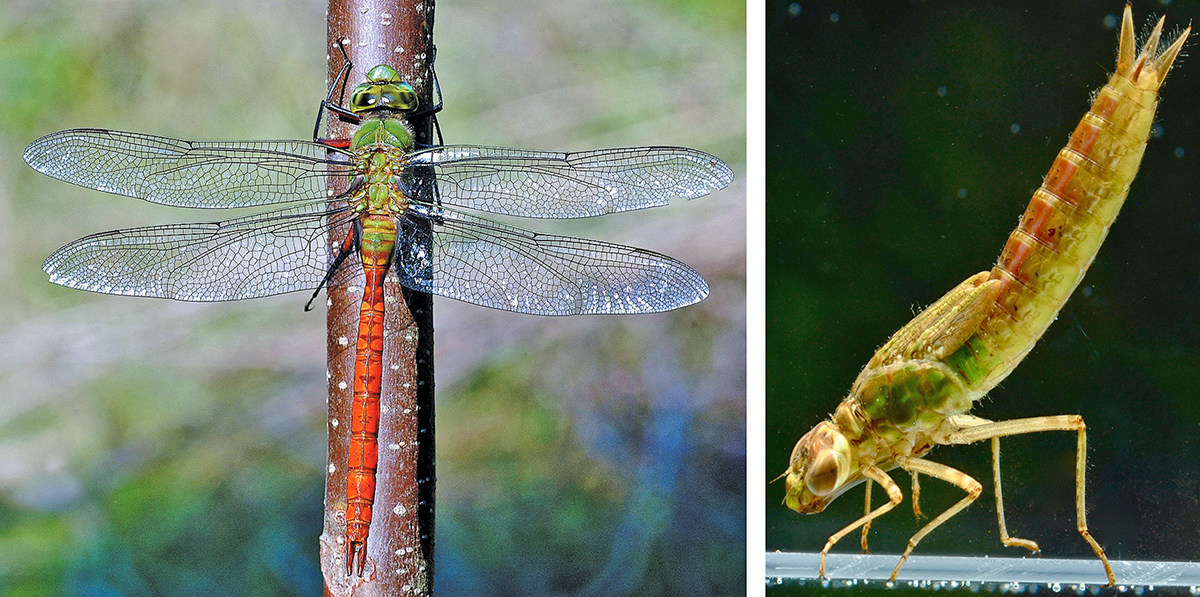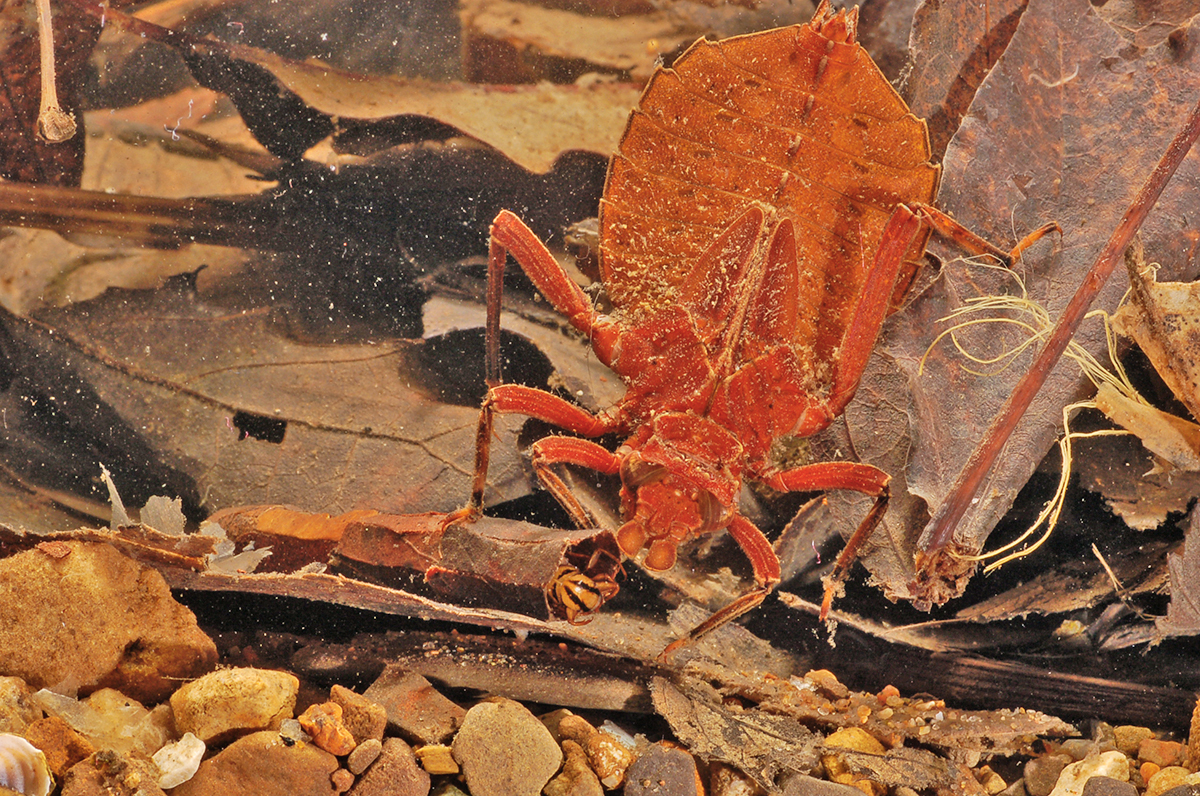ANDREW BOOSE
Aquatic Ecologist

The weather cools, and the aerially acrobatic dragons exit. The dragons of the aquatic realm take up their hunting under the watery surface. Stealthily, lying in wait, nearly invisible, these dragons are camouflaged in their underwater haunts. They fade into their habitats with cryptic patterns, imitating sand, the bark of sunken logs, leaves and stems of vegetation. What may look like a piece of floating leaf may in fact be a dragonhunter. Pick a piece of bark and you will need to observe it closely for the Cyrano darner tucked into the crevasse of bark. These cryptic critters inhabit the mightiest of rivers and the smallest of small streams. They populate everything from the largest of lakes down to puddles of water that come and go in a matter of weeks.

The wandering glider develops from egg to adult in such puddles in as short as six weeks, while the dragonhunter can live for years in its nymph stage in cold deep lakes and rivers. The swamp darner can survive months without water in the moist atmosphere between leaf layers, waiting for a vernal pool to fill with its spring rains.
Imagine, if you will, traveling back to the Jurassic period when prehistoric dragonflies, the Meganeura, had wingspans of two feet and more across. Their nymphs may have reached a foot long with jaws that could grab you from a half a foot away. Forward to the present-day dragonfly nymphs. They range from 12mm to 80mm. They come in a diverse lot of shapes. The darners are long and cylindrical, the skimmers tend to be short and stubby and the dragonhunters and river cruisers are wide with a low profile. Voracious predators, they eat whatever they can subdue with lightning quick mandibles jetting out one third of their total body length, grabbing and pulling the prey back to their powerful jaws, to be devoured.

The comet darner, a resident of ponds with low to no predatory fish, are bold and may attack by launching themselves, torpedo-like, toward their prey. Like all dragonfly nymphs, they propel themselves forward by shooting water through their rear ends. Unlike the fictitious fire-breathing dragons of fairy tales, these tiny dragons are fluid flatulaters. The comet darner’s jetting about in such a fashion makes it easy prey for insect eating fish, hence why the comet darner is found mostly in relatively fishless ponds.
Prey like daphnia is consumed instantly. Small fish fry takes a little longer. Dragonhunters will capture caddisfly cases and manipulate them until the caddisfly larvae is pushed close enough to an end of the case where the dragonhunter can snag its victim from its house. Dragonfly nymphs will also fall prey to one another. One only needs to collect a few of these bugs in a bucket to find out there will be only one left by the end of the day. It’s like Highlander — There can be only one! They basically have one operation in life as a nymph, to eat to get bigger and become a flying adult. So, as we enjoy our upcoming Metro Parks’ winter hikes, the dragons will lie in wait for the warm weather to find out if it is their year to take flight.


Amazing information and so very well written. Thank you, Andrew for this most interesting educational piece.
Nice article Andrew. And as always, great photos.